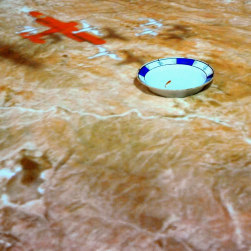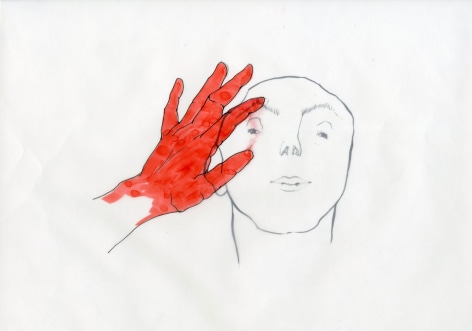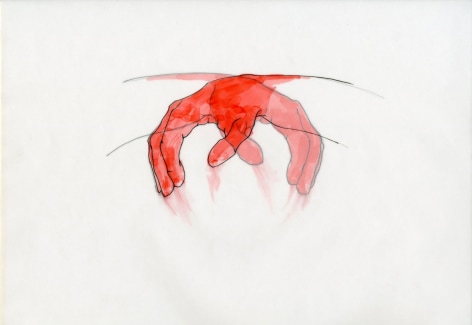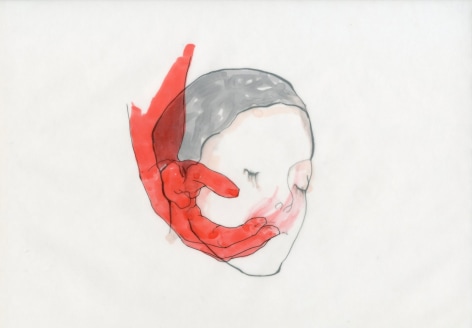
Avish Khebrehzadeh
Maskhara
16 Apr - 31 May, 2014
SPROVIERI
23 Heddon Street London W1B 4BQ
Sprovieri is delighted to announce 'Maskhara' by Avish Khebrehzadeh, the artist's second solo show at the gallery.
For this exhibition Avish Khebrehzadeh produces an animation video 'Maskhara in 8 eMotions' and a body of related pencil and ink drawings rendered on layers of paper. Khebrehzadeh’s distinctive and paired down line drawings are, as always, referencing a rich set of associations and meanings. Where much of her past works have drawn direct inspiration form literary sources, here Khebrezadeh’s new body of work explores meanings and associations relating to a single word and its multitude of etymological possibilities – mask.
Khebrehzadeh’s focus on the notion of the mask is in essence a study of conditions, behaviours or gestures through which the individual either conceals the true self or projects an alternative self. Apart from physical masks and facial ornaments, the notion of the mask is extended to explore the workings of facial expressions as layered, intentional and conscious means of communication that guard, distort or screen true emotions. The mask is also a transformative device used in grieving, celebration or ceremonial rituals.
The title of the animation 'Maskhara in 8 eMotions' is a deliberate play on word between motions and emotions. Furthermore, the etymological root of the English word mask is curiously uncertain. It is linguistically attributed to various Indo-European and/or Semitic words. These range from masca (Latin meaning mask, spectre or nightmare) and mascurer (Old French via Provencal mascarar to mean to blacken the face) to masecha (Hebrew for mask) and maskhara (Arabic for buffoonery or ridicule). Khebrehzadeh exploits this speculative and ambiguous etymology to produce various portraits and guises.
Finally, Khebrehzadeh’s present group of drawings are her own take on old master portrait drawings of the great schools and traditions of Italy and northern Europe. Here Khebrehzadeh appropriates that tradition through her distinctly minimalised language – formally, aesthetically and conceptually (Vali Mahlouji, 2014).
Born in Iran in 1969, Avish Khebrehzadeh lived in Madagascar, UK, Italy and the United States. Khebrehzadeh’s work is part of important public collections such as the GAM (Turin), the MAXXI (Rome) and the Corcoran Gallery of Art (Washington DC) among others. Her participation in biennials includes Santa Fe, Istanbul, Liverpool and Venice in 2003 when she won the Golden Lion for best young Italian artist.



